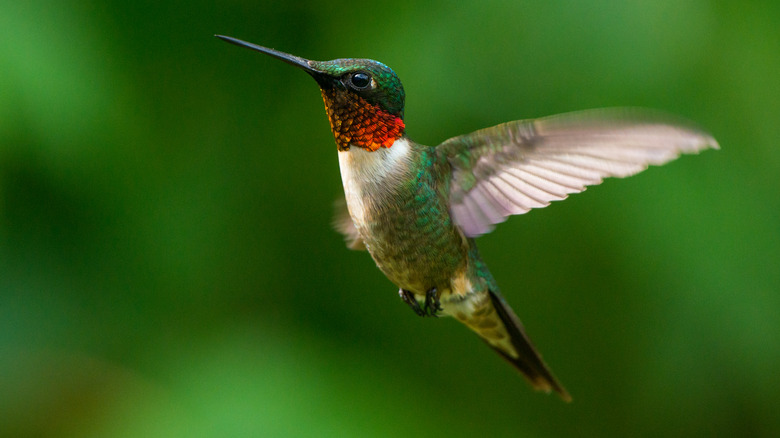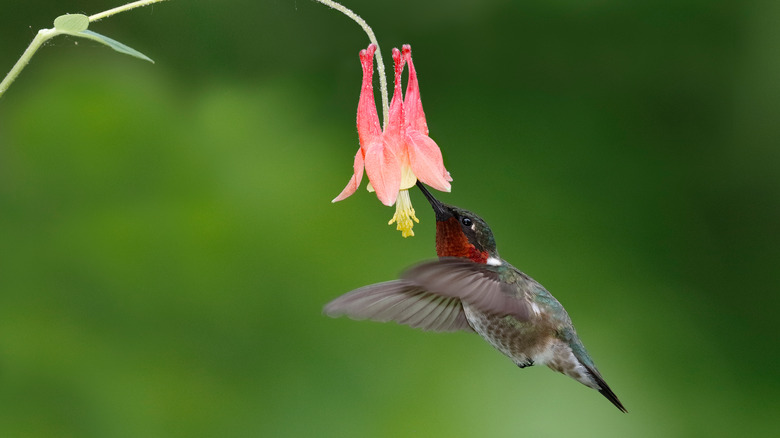Why May Might Be The Best Time To Spot A Ruby-Throated Hummingbird In Your Yard
May is such an exciting time of year. As the saying goes, April showers bring May flowers, but we could continue on to say those flowers attract hummingbirds. Worldwide, there are well over 300 species of these tiny birds, but for those living east of the Mississippi River, there is likely just one type you'll see in your yard. Ruby-throated hummingbirds spend winters in Central America and Mexico before migrating north through the United States and Canada to breed and spend the summer. By the time May rolls around, these birds are either still moving north or settled into their warm season home.
You can support hummingbirds during their migration season by putting out a feeder, but where you live determines when you should do so. Naturally, those living in Florida will need to provide nectar long before folks who live in Maine. To help determine when to place your feeder out, Hummingbird Central provides a migration map. Here, hummingbird watchers can report sightings to help you know when these speedy fliers are headed your way.
Attract ruby-throated hummingbirds to your yard
To help ensure you spot ruby-throated hummingbirds in May, you can take a few extra steps to attract them. As we mentioned, providing a food source is a great way to bring them to your outdoor space, and you can choose from plenty of types of hummingbird feeders. Use the migration map and place your feeder outside when hummingbirds are reported just south of your area to help feed those early travelers.
Your yard will be even more attractive to migrating hummingbirds and those looking for a place to spend the summer with early-blooming plants that provide natural nectar. Those fairy-like fowl love the blooms of native red columbine, and luckily, they are easy to grow and take care of. Baskets full of plants that produce trumpet-shaped blooms, like Penstemon or Agastache species, also appeal to hummingbirds while making your outdoor space even more beautiful.

